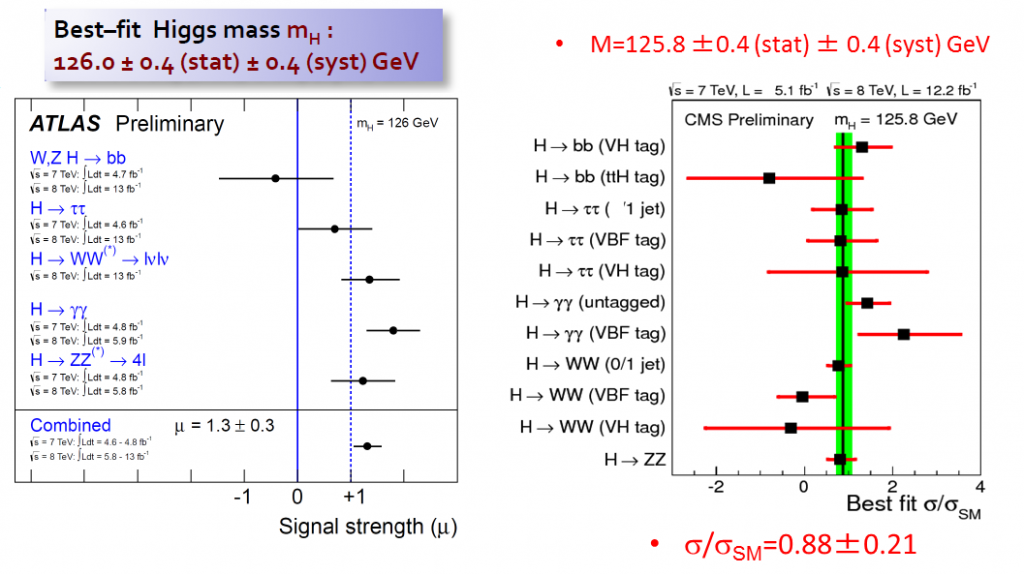This is just a simplified version for an OLLI class, not a comprehensive treatment. The figures are from the excellent particle physics blog resonaances.blogspot.com of 14 November, 2012. They are from the ATLAS and CMS presentations at the Hadron Collider Physics conference in Kyoto at the same time. The graphs show the results for the measured probability (or cross section) for production of the Higgs in several channels as a ratio to that predicted in the standard model. If the new resonance is only the standard model one, all of the ratios should eventually be 1. If there is a significant deviation now or eventually, it would signal new physics as well. In the ATLAS figure, +1 on the x-axis is the dashed line. In the CMS figure, 1 is slightly above the average of 0.88 which is the black line, and the green band is the error of plus or minus 0.21.
The measure of the number of proton-proton collisions or luminosity is in units of inverse femtobarns or fb^(-1) or /fb, which is equivalent to 70 trillion proton-proton collisions. Without giving a full definition here, suffice it to say the more luminosity you get, the more events you get.
The original Higgs announcement was on July 4, 2012 at CERN with data at 7 TeV of 4.8 /fb, and at 8 TeV of 5.9 /fb, where /fb means the same as a luminosity of an inverse femtobarn or fb^(-1). The new November data is up to 13 /fb at 8 TeV in ATLAS and 12.2 /fb at 8 TeV in CMS. There is already more data, but they haven’t yet been analyzed. ATLAS did not update the Higgs to gamma gamma, or the Higgs to 4 leptons (4l).
The ATLAS average ratio to the standard model called mu is 1.3 ± 0.3. The CMS average is 0.88 ± 0.21 at what is called one standard deviation, or the inclusion of 2/3 of the probability.
In CMS, we see that the good agreement is from two similar modes, Higgs to WW and Higgs to ZZ. Errors on other modes are at least 50%. So the test that various modes all agree has not yet been met to better than 50%. The ratio to the standard model for Higgs to gamma gamma (γγ) is higher than 1 in both analyses, but not out of line with the large errors.
I wanted one graph of an actual bump in the data to show what a Higgs signal looks like over the background, which is the dashed red line. This is from the July 4 data in CMS. I haven’t yet found one for the November data. July 4 is the date on which both groups announced the Higgs discovery. The full red line labeled S+B is signal (S) of the Higgs plus background (B). The dashed red line is the fit to the background (Bkg or B).


